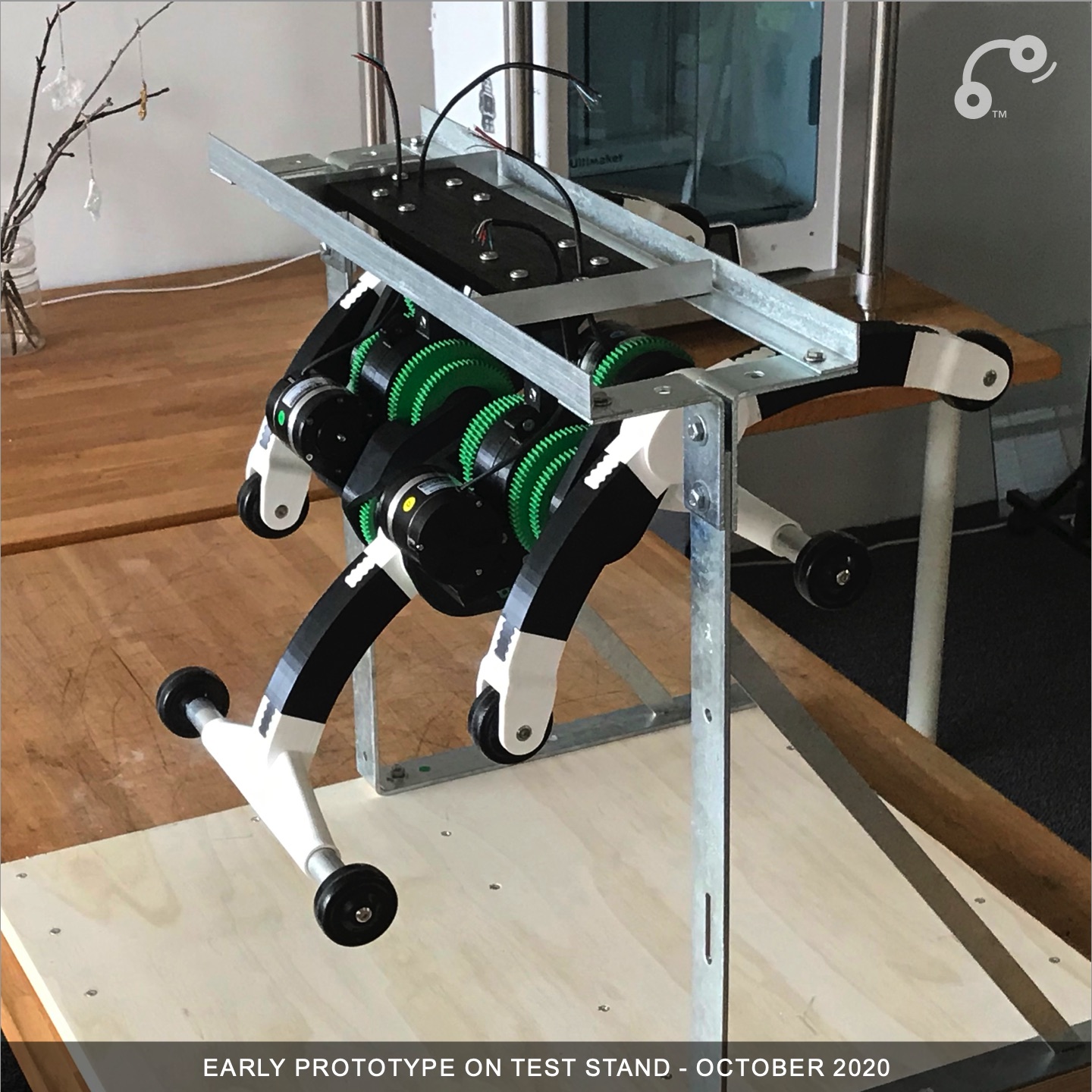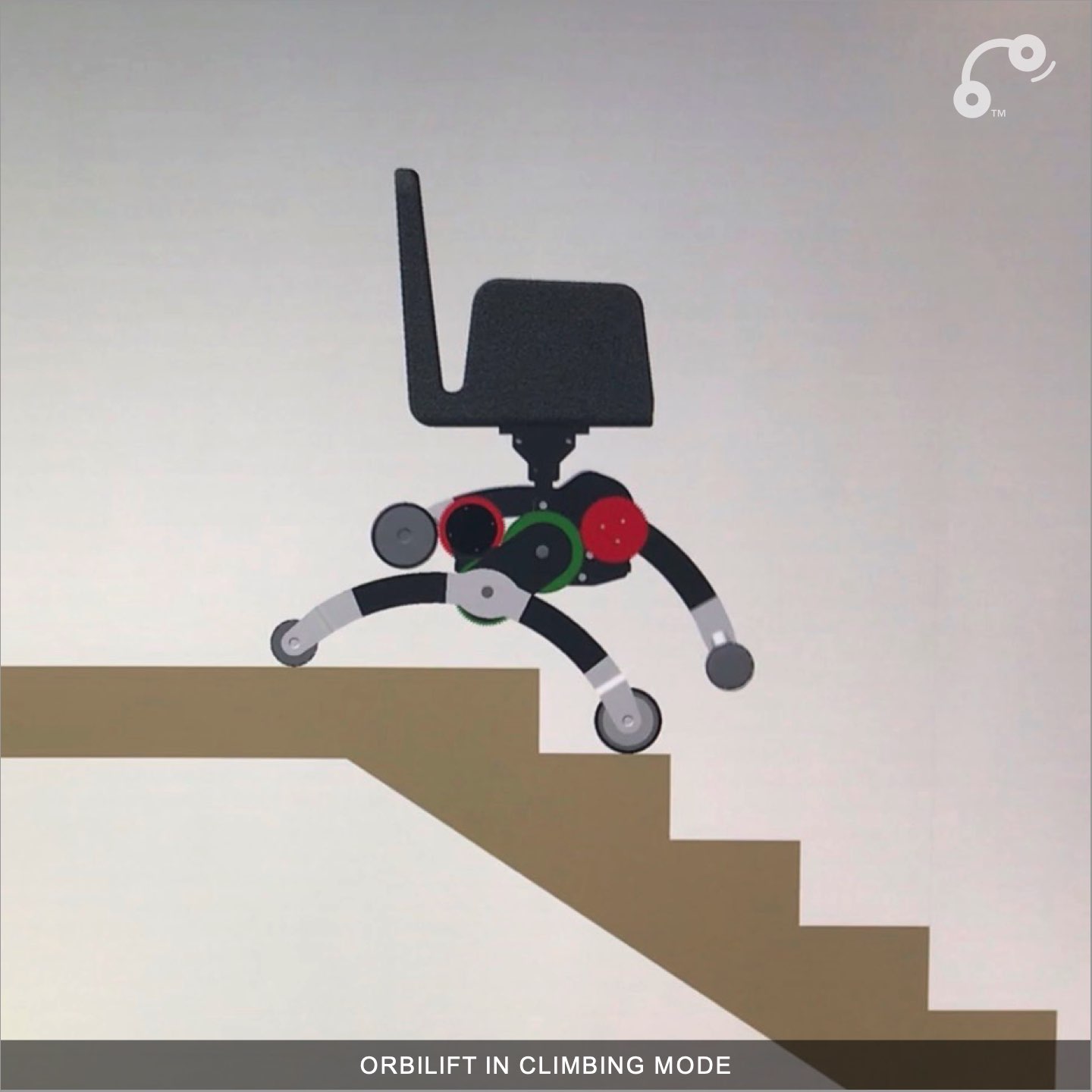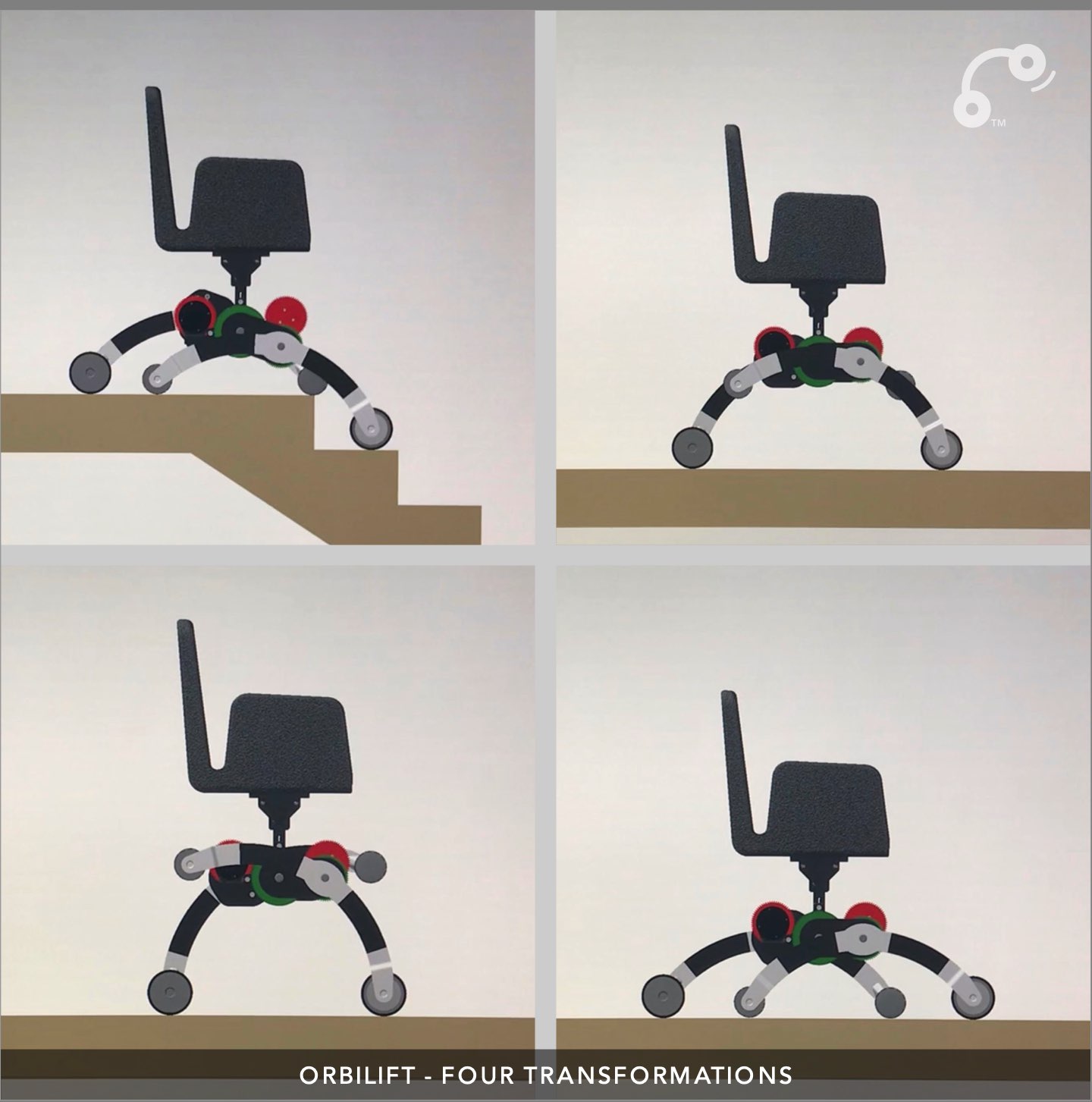

1.1
3d mobility
The Orbilift is a new mechanism for use in transport. It moves in two ways - it climbs and rolls. This makes it more versatile than a wheel, because a wheel only rolls.
Whilst the wheel is a good invention, it has a problem. It stops if it meets an obstacle. When an Orbilift meets an obstacle, it climbs over it.
In short:
A wheel travels two-dimensionally, across a surface. An Orbilift travels three-dimensionally, up, down and across.
Wheels = 2D mobility
Orbilift = 3D mobility

1.2
climbing mode
The Orbilift climbs by lifting, like a crane. One part stays on the ground, whilst the other part lifts and moves. It is stable as it moves, making it safe around humans.
The mechanism can be thought of as: two cranes sharing one arm, to lift each other, from one place to the next.
As it lifts, one crane orbits the other, hence the name of the device: Orbilift.
It has a stable, horizontal platform for carrying goods and people. A counter-rotating gear, beneath, keeps the platform horizontal, as the Orbilift climbs.

1.3
rolling mode
The Orbilift has motorised wheels, similar to a power-wheelchair. This enables it to roll on flat ground.
In rolling mode, it is compact and normal-looking. This improves social inclusivity, for the user.
Existing types of vertical-transport, such as elevators and escalators, are fixed. The Orbilift is not fixed. It roams between different buildings, giving the user much greater freedom.
One Orbilift can serve several, different buildings, lowering the cost of providing vertical transport.

1.4
transformation
The Orbilift transforms in four ways:
1. Climbing mode: for stairs, kerbs and other obstacles;
2. Rolling mode: for flat ground, footpaths and ramps;
3. Small footprint / high position; for manoeuvring in confined areas + reaching high benchtops;
4. Large footprint / low position: for sitting at low height tables.
It is multimodal. Like a Swiss Army knife, one device does it all.

1.5
adaptivity
The natural world is three dimensional. But our most common means of transport - the wheel - can only move two dimensionally.
We flattened the world, to make way for the wheel, accelerating the disappearance of nature.
The Orbilift moves three dimensionally. Unlike the wheel, it does not require the world to be flattened. It adapts to natural landform.
A new family of robots arise from the Orbilift. Uses include: climbing transporters for delivering goods, and stair-climbing wheelchairs.
_________________
END OF SECTION 1
welcome to the Orbilift website. Thank you for reading the introduction. Please explore the other sections, which explain in more detail, how the Orbilift works and how it can assist people.
© ORBILIFT PTY LTD, AUSTRALIA, 2024
THIS WEBSITE IS FOR GENERAL INFORMATION ONLY. NO CONTENT MAY BE USED FOR: TECHNICAL, COMMERCIAL, LEGAL, ACADEMIC OR JOURNALISTIC PURPOSES. THE ORBILIFT IS IN MID-STAGE DEVELOPMENT AND OUTCOMES MAY DIFFER FROM PROJECTIONS. ORBILIFT IS PROTECTED WITH PATENT-FILINGS AND TRADEMARK-FILINGS IN MULTIPLE JURISDICTIONS, GLOBALLY.